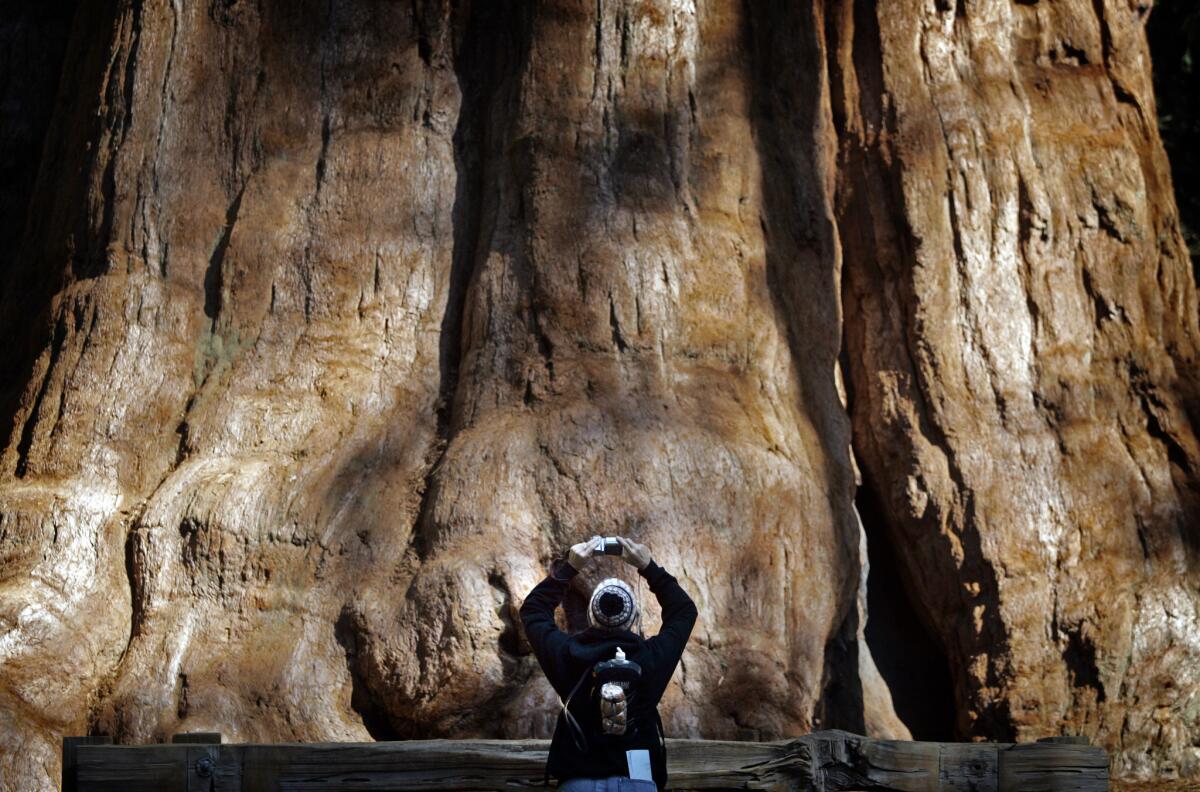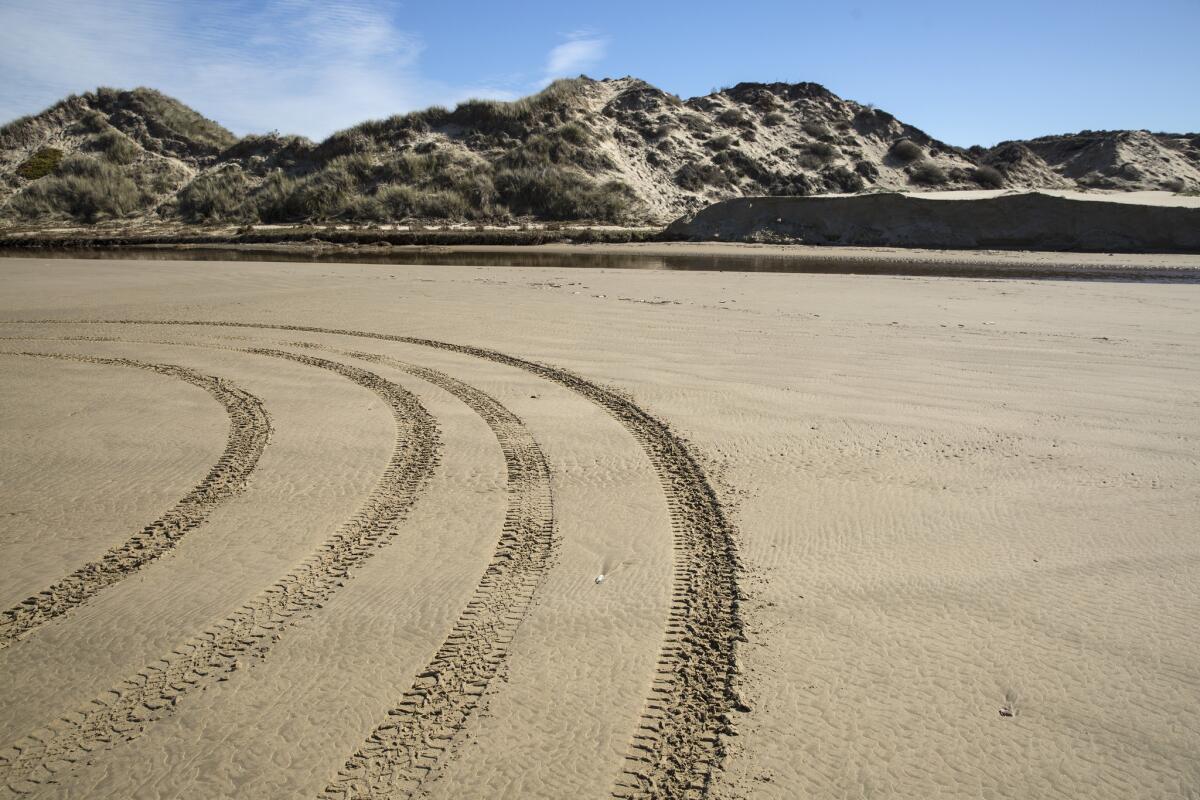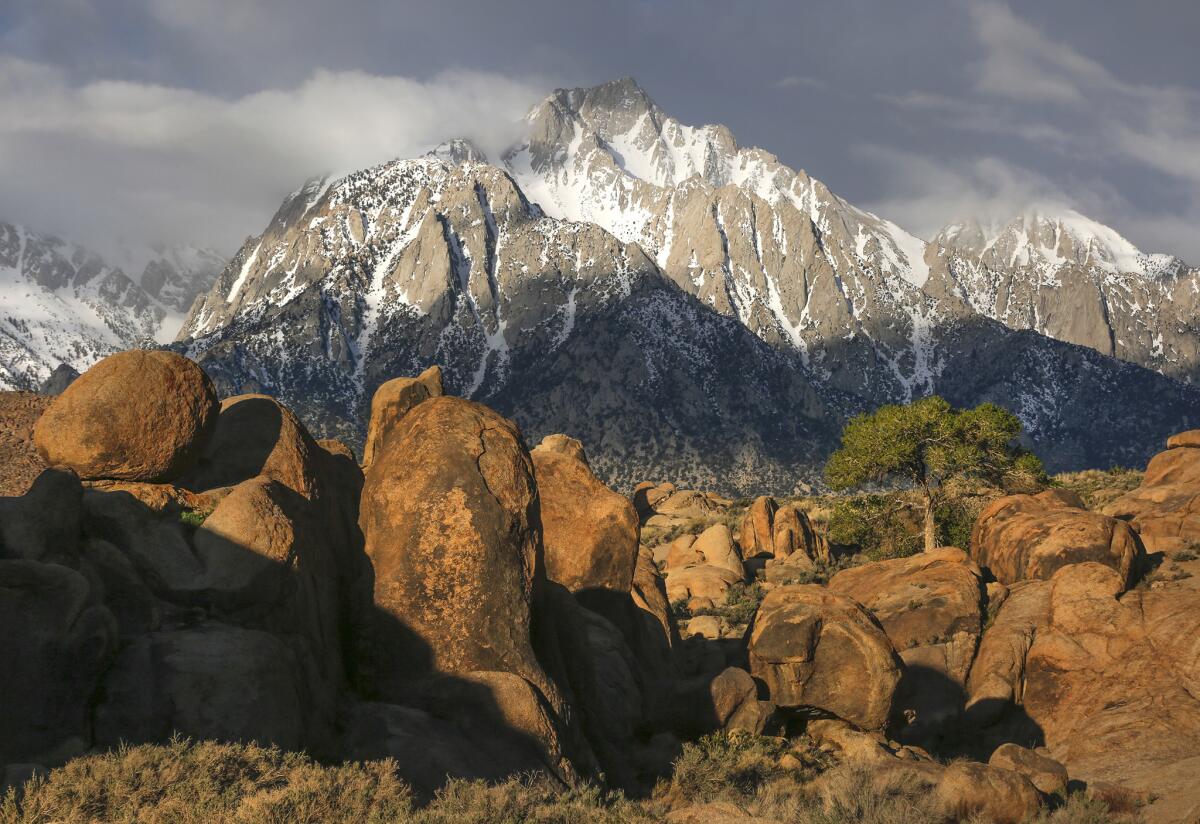A SloCal road trip gives you a geographic, climatological super sampler

- Share via
You know NorCal. You know SoCal. But do you know SloCal? If not, you’re invited to this Central California region, which is trying to carve out an identity of its own.
After spending a week road tripping in the area — sand duning, big tree hiking, desert wandering and snowboarding — I’m convinced it’s a fitting moniker and worthy of a road trip, whether you live in the Golden State or you’re seeking a quieter vacay version of California.
Unlike both Northern and Southern California, SloCal provides access to four of California’s most iconic geographies: coastline, mountain, valley and desert.
Central California doesn’t make you choose. Here you can explore all four seasons by car. Here’s how we did it
First up, the coast
Spencer, my wingman, and I began our journey by flying into the easy-in, easy-out municipal airport of San Luis Obispo, renting a car, then driving 15 minutes south on U.S. 101 to sleepy Pismo Beach.
Pismo bills itself as Classic California, which means it’s not as ritzy, developed or as fast-paced as more popular sandy spots along the Golden State’s 3,427 miles of shoreline coast.
We couldn’t surf because of bad weather, but we quickly rebounded by riding ATVs at nearby Oceano Dunes State Vehicular Recreation Area.

The highlight of this leg may have been the nearly two-hour “Bucket for Two” feast at the Cracked Crab (751 Price St.). For $80 combined, we gorged on snow and Dungeness crab, wild shrimp, Cajun sausage with triple mustard sauce, corn cobbettes, red potatoes, and sourdough rolls.
Next, the giant forest
From Pismo, we drove about 180 miles northeast through Three Rivers and into gigantic Sequoia and Kings Canyon national parks.
The trees don’t reveal themselves until you drive through a series of criss-crossing switchbacks. Once at the top, the trees hit you, surround you and easily overtake you.
See more road trip ideas and tips »
Winter weather kept us from trying more ambitious hikes, but seeing the General Sherman Tree (the world’s largest, the park service says) and Congress, Big Trees and Moro Rock trails in 2 feet of snow was surreal. The red trunks stand out against a snow-covered ground backdropped by a blue sky.
Almost as impressive was the cozy, middle of nowhere Wuksachi Lodge, the most memorable place we stayed during our entire trip. Doubles start about $190.
Dining at the lodge’s remarkably sophisiticated Peaks Restaurant didn’t break the bank either: Burgers start at $12.50, pastas at $16 and fish and meat entrees at $21.
Then, the desert
After Sequoia, we drove a five-hour semicircle south around the Sierra toward Lone Pine. We were flanked by endless orange fields on the way to Bakersfield, followed by poplars and palms, this after the already powerful mix of sequoias.
The breadth and width of trees in the region is a testament to the land’s fertility. That fertility abruptly dies, however, once you head east toward the unwelcoming and uninterrupted desert.

With timeless Death Valley far in the distance, we crossed photovoltaic solar fields as heavily populated and neatly ordered as the orange fields we had just driven through.
The highlight, however, was exploring the Alabama Hills and Movie Road desolation of Lone Pine, which a century ago was the go-to place for Hollywood to film its early Westerns.
Ending in the Sierra
To get to our final destination — snowboarding at Mammoth Mountain — we drove one more hour north on U.S. 395. The resort is open at least through Memorial Day this year.
Once at Mammoth Lakes, we enjoyed 150 inches of snowpack and up to a foot of fresh snow both days at the Sierra Nevada Resort. It was like Park City, Utah, only without the commercialization.
The Mammoth airport is tricky; weather can derail what would seem an easy return flight as it did ours — three times. But it didn’t spoil an otherwise memorable lark through sacred surroundings.
In fact, it reminded us that SloCal is more than just a marketing gimmick.
More to Read
Sign up for The Wild
We’ll help you find the best places to hike, bike and run, as well as the perfect silent spots for meditation and yoga.
You may occasionally receive promotional content from the Los Angeles Times.






